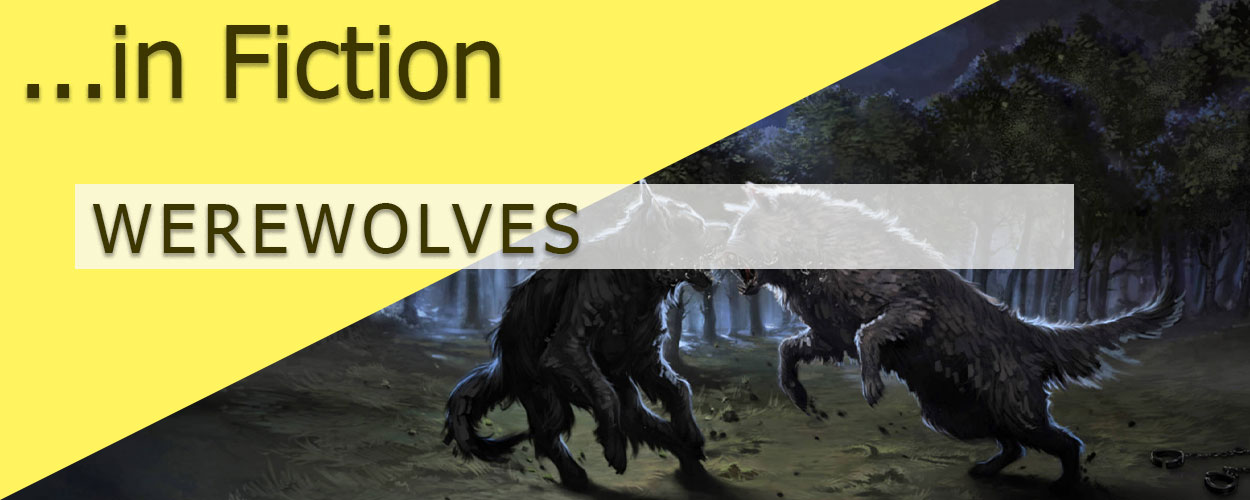

Posted: April 18, 2022
Like vampires, werewolves are very popular in fiction—especially teen and young adult fiction. They are famously the main enemy of vampires, and most often the two supernatural creatures show up together.
Some of the books I’ve read with werewolves include The Wolves of Mercy Falls series [No Review Available] by Maggie Stiefvater, the Harry Potter series [No Review Available] by J.K. Rowling, and The Mortal Instruments series [Related Review: The Mortal Instruments Book 1: City of Bones] by Cassandra Clare. In each of these, the concept of werewolves and how they transform is unique. In some cases, a werewolf transforms only on a full moon; the transformation is forced, and they either change into a full wolf—normal-sized or larger than typical wolves—or they become a hybrid creature, standing on two legs. Other media allows the werewolf to transform at will. I think the most unique take was from Stiefvater, whose wolves transformed based on temperature and were thus only wolves during the colder months.
The thing I love most about werewolves compared to other creatures is how unique they can be. Each author can tweak the lore a bit—as the mythos of werewolves is so deep and extensive—so their own use is different.
In preparation for this article, I did a bit of research on the history of werewolves and found these wonderful blogs. The History of Werewolves dives into the history of werewolves in Gothic and Horror fiction, and thusly talks about the first known instance of the wolf-man. Lycaon was recorded as early as 200 BC in Greek mythology, as being a king who invited the gods for a feast, and instead of serving them proper meat, he served them his own children. When Zeus found out, he cursed King Lycaon to become a monstrous beast, a vicious wolf, forevermore. This is where the term lycanthropy comes from. A Literary History of the Werewolf discusses the history of werewolves strictly in literature, and Werewolves in Literature - Transformation provides a list of works that really embody the transformation of the werewolf.
Moving more into modern werewolf novels, they take a step back from horror and move into romance, the same as vampires. Pack dynamics are a popular trope in these stories, whether with the transformation from human to beast or not, and the concept of soulmates is key to many of these romances. This, I think, is another example of genre fiction, and as such, certain aspects must be included. Some people begin reading these books and complain about the clichés or that they are “the same as every other werewolf book out there”, but what they don’t understand is that that’s the point. Whether a reader enjoys genre fiction or not determines if they’ll like the book or not. On the other hand, if someone goes into a non-genre book expecting to find those things, they’ll be disappointed.
As for me, I’m not a fan of genre fiction. I can read it and be satisfied, but my real interest lies in a unique story. I like when people handle vampires, werewolves, etc. differently. I like when the plot itself is good. Genre fiction, I find, has the plot mostly centred around the existence of these creatures, and my preferred stories are when the plot can exist on its own with the added benefit of the supernatural creatures.
Not to say that nothing about the plot should hinge around the existence of the creatures. That wouldn’t be realistic. Some elements of the story should only be possible because of this.
Overall, I think that any story can be great. There will always be someone who enjoys it, so the focus should be on consistency. The characters should be real and relatable. The worst thing is when a character’s personality is based around a single aspect of themselves—it just doesn’t happen in real life. All characters are driven by what they want, and in a story with werewolves, the author must take other things into account—their predatory nature. This is because werewolves, typically, aren’t just humans. This is well known, but I’ll reiterate now: Werewolves have animal instincts. They are not humans living in wolf skin, or wolves living in human skin. (Though sometimes they are.) I think the hardest thing to write would be a mix of both, interconnected on a level that isn’t just a mix and match. To paint a picture, I like to think of the difference between a plant with red flowers and white flowers and a plant with pink flowers.
Either way, the use of werewolves in fiction can be done well or it can be done poorly, same as everything else. My main advice is to do your research, maintain consistency, and you’ll do just fine.
Angels & Demons in Fiction
Deities in Fiction
Dragons in Fiction
Dwarves in Fiction
Dystopia in Fiction
Elves in Fiction
Fast Burn in Fiction
Heroes in Fiction
Love Triangles in Fiction
Magic in Fiction
Mythical Creatures in Fiction
Orcs in Fiction
Powers in Fiction
Pregnancy in Fiction
Propaganda in Fiction
Prophecies in Fiction
Romance in Fiction
Slow Burn in Fiction
Shapeshifters in Fiction
Vampires in Fiction
Vampires in Fiction II
Villains in Fiction
Werewolves in Fiction
Witches & Warlocks in Fiction
*Fenryr’s Chosen Book 1: Claws of Midgard by Des M. Astor*
*Wolf Book 1: Under Your Skin by Ellen Hunter*
The Twilight Saga Book 2: New Moon by Stephenie Meyer
The Mortal Instruments Book 1: City of Bones by Cassandra Clare
Tigerpetal Press is a small book press dedicated to publishing local authors and poets.